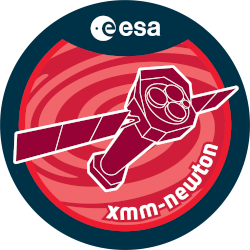

| Proposal ID | 004954 |
| Title | CM DRACONIS: DERIVING CORONAL STRUCTURING FROM ECLIPSES |
| Download Data Associated to the proposal | https://nxsa.esac.esa.int/nxsa-sl/servlet/data-action-aio?obsno=0049540101 |
| DOI | https://doi.org/10.5270/esa-eeqrdsu |
| Principal Investigator, PI | Dr Manuel Guedel |
| Abstract | CM Draconis is the least massive, fully eclipsing double-line spectroscopic bi-nary system known, with component masses of about 0.2 solar masses. The two al-most identical components eclipse each other every 15.2 hours. Eclipse studies of such systems are pivotal for our understanding of coronal structuring. Wepropose to monitor two (one primary, one secondary) eclipses. We request twotimes 3.8 hours of exposure time each centered at one of the eclipses. Lightcurve inversion techniques will then be sensitive to coronal structures out toabout 3 stellar radii from each component. This investigation will provide newinsight into extent, structure, and density of active stellar coronae. Resultswill be compared with the earlier-type, much more active YY Gem system. |
| Publications |
|
| Instrument | EMOS1, EMOS2, EPN, OM, RGS1, RGS2 |
| Temporal Coverage | 2001-10-26T08:00:52Z/2003-08-19T19:09:10Z |
| Version | 17.56_20190403_1200 |
| Mission Description | The European Space Agencys (ESA) X-ray Multi-Mirror Mission (XMM-Newton) was launched by an Ariane 504 on December 10th 1999. XMM-Newton is ESAs second cornerstone of the Horizon 2000 Science Programme. It carries 3 high throughput X-ray telescopes with an unprecedented effective area, and an optical monitor, the first flown on a X-ray observatory. The large collecting area and ability to make long uninterrupted exposures provide highly sensitive observations. Since Earths atmosphere blocks out all X-rays, only a telescope in space can detect and study celestial X-ray sources. The XMM-Newton mission is helping scientists to solve a number of cosmic mysteries, ranging from the enigmatic black holes to the origins of the Universe itself. Observing time on XMM-Newton is being made available to the scientific community, applying for observational periods on a competitive basis. |
| Creator Contact | https://www.cosmos.esa.int/web/xmm-newton/xmm-newton-helpdesk |
| Date Published | 2004-09-25T00:00:00Z |
| Last Update | 2025-01-27 |
| Keywords | "exposure time", "coronal structures", "solar masses", "active stellar coronae", "stellar radii", "secondary eclipses", "identical components eclipse", "deriving coronal structuring", "coronal structuring", "cm draconis", "component masses" |
| Publisher And Registrant | European Space Agency |
| Credit Guidelines | European Space Agency, Dr Manuel Guedel, 2004, 'CM DRACONIS: DERIVING CORONAL STRUCTURING FROM ECLIPSES', 17.56_20190403_1200, European Space Agency, https://doi.org/10.5270/esa-eeqrdsu |